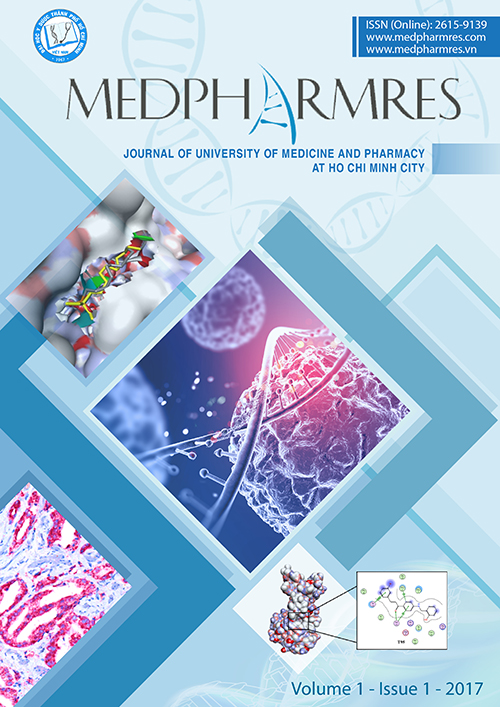Quantitative Hepatitis B Surface Antigen in Different Phases of Chronic HBV Infection in Vietnamese Patients: The Preliminary Study
Tóm tắt
Quantitative serum HBsAg has been considered as a marker that reflects the immune effect on clearance of HBV. The HBsAg level varies in different genotypes and phases of infection. Therefore, we aimed to investigate the serum HBsAg level and its correlation with HBV DNA in different phases of Vietnamese CHB patients, predominately infected with genotype B and C. 267 chronic HBV treatment naïve patients (156 genotype B and 61 genotype C) were recruited in this cross-sectional study. Patients were categorized to 5 groups: immune tolerance (IT), HBeAg positive chronic hepatitis B (CHBe+), inactive carrier (IC), viral reactivation (VR), HBeAg negative chronic hepatitis B (CHBe-). The serum HBsAg level was measured by ECLIA method. Correlations between HBsAg and HBV DNA were analyzed by Spearman's correlation. The median HBsAg values were different between groups of CHB 4.56 log10 IU/mL (IT), 3.85 log10 IU/mL (CHBe+), 2.72 log10 IU/mL (IC), 3.21 log10 IU/mL (VR) and 3.09 log10 IU/mL (CHBe-) (p= 0.001). The significant correlations between HBsAg levels and HBV DNA were found in all CHB groups (r = 0.3 to 0.5). The ratios of HBsAg/HBV DNA were distributed around 0.5. The wide distribution of HBsAg and the highest ratio of HBsAg/HBV DNA were found in the IC groups. Our study demonstrated that serum HBsAg levels were significantly different in natural stages of CHB. Significant correlations between HBsAg and HBV DNA were found in all CHB phases. The wide distribution of HBsAg in the IC group raises the question on the existence of HBsAg integration in CHB patients.

